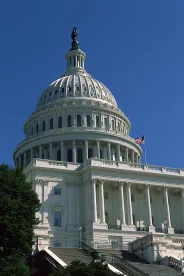The midterm elections that took place in November 2018 have the employer community wondering what to expect in 2019. This article will examine how those elections might impact labor and employment policymaking in 2019.
U.S. House of Representatives
The most significant change resulting from November’s elections is that Democrats are now in control of the House of Representatives for the first time in nearly a decade. Democratic leadership has already named Representative Bobby Scott (D-VA) to be chair of the House Committee on Education and Labor (formerly known as the House Committee on Education and the Workforce). Here are just three of a myriad of issues that Scott and the committee will address.
Sexual Harassment
The #MeToo movement has focused the nation’s attention on sexual harassment in the workplace. But because sexual harassment is already unlawful under Title VII of the Civil Rights Act of 1964, House Democrats will surely offer other vehicles to address this problem. Bills that were introduced in the 115th Congress to ban (or at least limit the scope of) arbitration agreements and nondisclosure agreements will undoubtedly be reintroduced in 2019.
Paid Leave
Republicans can no longer simply say no to paid leave policy proposals. These days, the questions are “What kind of leave?” and “Who pays for it?” President Trump made paid leave a campaign promise and included a proposal in his 2017 budget. The Tax Cuts and Jobs Act of 2017 provides some incentives for employers that offer paid leave, and other proposals, such as the Workflex in the 21st Century Act and the Family and Medical Insurance Leave (FAMILY) Act, have also been introduced. While significant debate over these various proposals is likely to occur in 2019, it is doubtful that there will be much compromise.
Minimum Wage
Raising the federal minimum wage will assuredly be part of the Democrats’ policy agenda. In fact, committee Democrats have already criticized Republicans for not holding a hearing on the minimum wage during the eight years they held the majority.
U.S. Senate
The Senate remains firmly under Republican control in 2019. With the Democrats maintaining their ability to filibuster unwanted legislation, as well as their newfound control of the House, it is unlikely that major employment legislation will make it through the Senate, despite the Republican majority. In fact, employment legislation that might be passed by the House, such as an increase in the federal minimum wage, might not go anywhere in the Senate. As majority leader, Senator Mitch McConnell (R-KY) will likely focus on continuing to confirm nominees to executive branch agencies as well as the federal bench. McConnell has been particularly motivated to confirm judges to federal district courts and courts of appeals, as such judges are perhaps viewed as a bulwark against a deluge of regulatory activity that might ensue should Democrats retake the White House in 2021.
Executive Branch
With Congress unable to accomplish much of anything, the agencies—through regulatory and subregulatory activities—have become the main policymakers in town. We will focus below on what 2019 might look like for the Department of Labor (DOL) and the National Labor Relations Board (NLRB).
Department of Labor
In addition to enforcement, the DOL will likely spend much of its time and resources on regulatory activity. While high-level political positions have been filled—for example, Secretary of Labor Alexander Acosta—vacancies remain at top positions in important component agencies, such as the Wage and Hour Division (WHD) and the Occupational Safety and Health Administration (OSHA). This lack of personnel has made it challenging for the DOL to push its agenda at a pace that satisfies the business community, but rulemaking activity expected in 2019 includes the following:
-
Regular Rate
In late 2018, the DOL indicated that it would issue a proposed rule to clarify what type of compensation is included in employees’ “regular rate” for purposes of calculating overtime. At this time, no proposal has issued, and we wonder whether it will issue at all.
-
Joint Employer
The DOL’s WHD planned to issue a proposal to update its joint-employer regulations under the Fair Labor Standards Act (FLSA). This proposal was scheduled to issue in December 2018, but has yet to see the light of day.
-
OSHA Recordkeeping
A final injury and illness tracking rule is currently scheduled for June 2019. It is anticipated that under the final rule, employers with at least 250 employees in a single establishment would no longer need to electronically file 300 and 301 logs (but they would still need to e-file the 300A summary annually).
National Labor Relations Board
The Board will look to accomplish much of its policy agenda for as long as it will enjoy a 3-to-1 Republican-to-Democrat majority. This significant edge in votes will make it easier for Republicans to enact policy changes over the likely objections of the sole Democratic member, Lauren McFerran. Chief among the Republicans’ objectives will be a final joint-employer rule, which could issue sometime in the spring or summer of 2019. Chairman John F. Ring has publicly stated that proposed changes to the Board’s elections procedures could begin to issue in piecemeal fashion as early as this winter. If the fifth seat on the NLRB gets filled by a Democrat, Republicans will still hold the majority but will find it more challenging to get their policy preferences through in a timely manner.
Conclusion
As a new Congress commences in 2019, the labor and employment regulatory landscape is once again shifting in a way that creates potential uncertainty for the employer community. While Congress is not expected to enact major employment legislation, the executive branch agencies will remain active.




 />i
/>i

